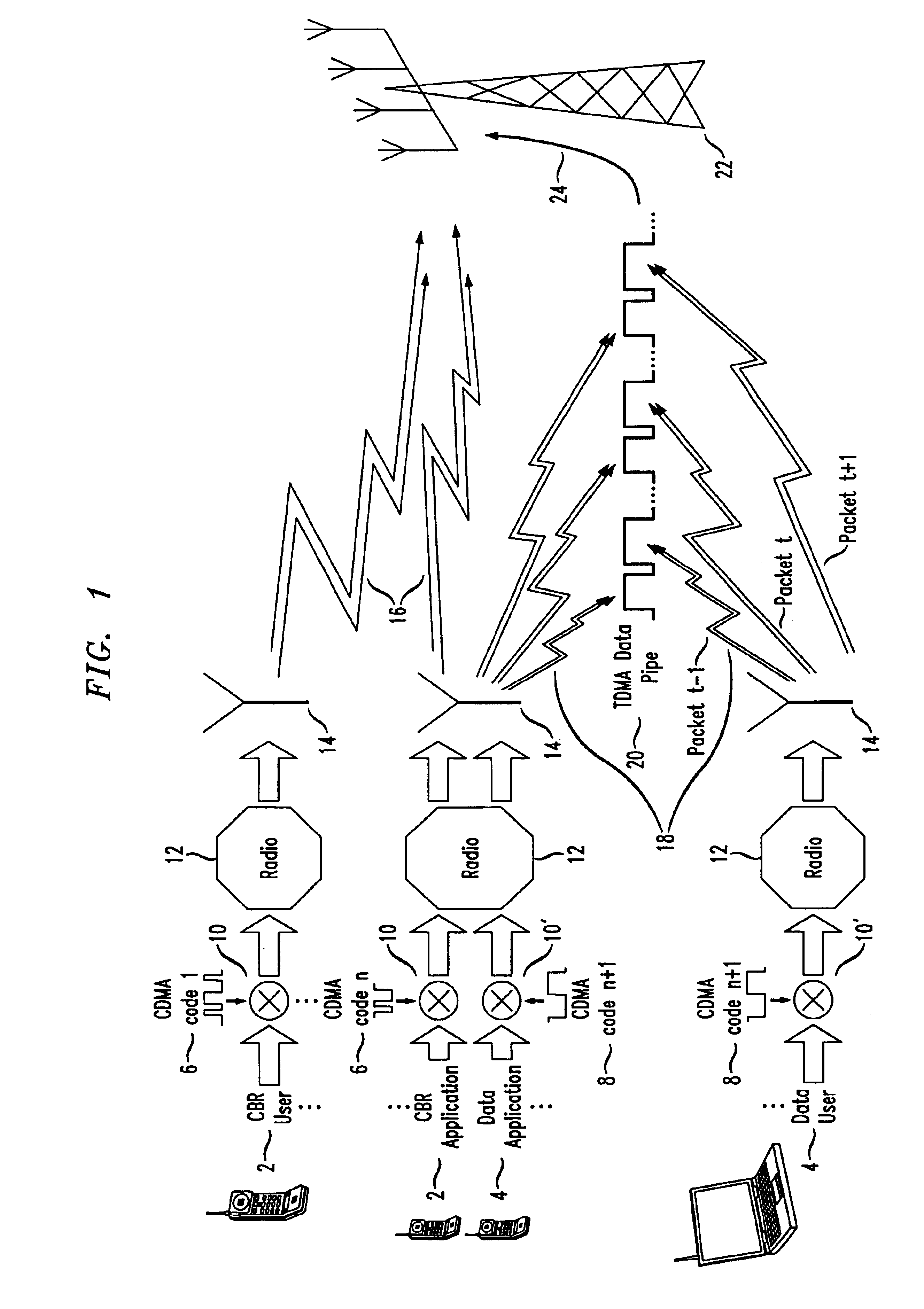Method and apparatus for communicating heterogeneous data traffic
a heterogeneous data and communication technology, applied in the field of telecommunications and digital communication systems, can solve the problems of large data communication peak and lull, system wide data bandwidth variance, and limited advantages, and achieve sufficient quality-of-service and sufficient quality-of-service
- Summary
- Abstract
- Description
- Claims
- Application Information
AI Technical Summary
Benefits of technology
Problems solved by technology
Method used
Image
Examples
Embodiment Construction
[0022]In any embodiment according to this invention, the appropriate CBR spreading factor is determined and fixed. The VBR spreading factor, on the other hand, depends on the amount of the VBR traffic: the more VBR traffic, the smaller the factor. At the same time, the smaller the VBR factor, the fewer CBR users that can be supported. Hence, the VBR spreading factor is a parameter that determines the trade-off of how much of both types of traffic has to handled. That parameter need not be fixed, e.g., it could be periodically adjusted to the traffic profile. In addition, the VBR spreading factor can depend only on the total amount of VBR traffic and on the number of CBR users. The number of VBR users need not enter into the trade-off. The number of VBR users that can share the VBR signal is determined by how that signal is partitioned in time slots, independently of the spreading factors.
[0023]More particularly, the spreading factor for the CBR streams is readily determined from the...
PUM
 Login to View More
Login to View More Abstract
Description
Claims
Application Information
 Login to View More
Login to View More - R&D
- Intellectual Property
- Life Sciences
- Materials
- Tech Scout
- Unparalleled Data Quality
- Higher Quality Content
- 60% Fewer Hallucinations
Browse by: Latest US Patents, China's latest patents, Technical Efficacy Thesaurus, Application Domain, Technology Topic, Popular Technical Reports.
© 2025 PatSnap. All rights reserved.Legal|Privacy policy|Modern Slavery Act Transparency Statement|Sitemap|About US| Contact US: help@patsnap.com



